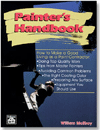The Steel Stud Manufacturers Association's "Limiting Heights" manual indicates that a 31⁄2-inch 20 gauge metal stud spaced at 16-inch o.c. could not be used to reach 17 feet, 6 inches. In order to use a 31⁄2-inch stud at 16 inches o.c., it would have to be 18 gauge rather than 20 gauge due to the L/240 requirement.
If the deflection criteria were L/120, a 20-gauge stud could have been used. What bothers me is the fact that the wall type schedule specifically called for 20-gauge studs; however, the deflection criteria required 18 gauge.
We also recently bid a seven-story metal stud load-bearing project with similar contradicting issues. The architectural plans specifically called out 31⁄2-inch 25-gauge metal studs at 24 inches o.c., for interior non-load bearing walls. The structural drawings contradicted the architectural drawings, indicating that all interior non-load bearing walls shall be 31⁄2-inch 20-gauge studs at 16 inches o.c.
Contradictions between the architectural and structural drawings are interesting because these contradictions can benefit, as well as hurt, a subcontractor. In the above examples, it appears the structural engineer and architect did not review each other's work to make sure the documents were complementary to one another.
Contradictions between the architect and engineer are becoming more commonplace. In most cases, it has become the subcontractor's responsibility to either have the issue clarified or take responsibility.
If you choose to have the issue clarified during the bid process, you may find that both the engineer and architect may simply tell you to propose the most stringent interpretation or say there is not enough time to issue an addendum correcting the issue. If there is time to issue an addendum, you cannot be sure what the addendum will say until you get it.
If an addendum is issued, you have no way of knowing if your competitors have received it, read it or made an adjustment for it. Addendums are simply additional documents that modify the original construction documents.
Critical information
When preparing an estimate the critical information are all the plans and specifications, as well as any other documents, which will be made part of your subcontract. To simplify the bidding process, I suggest that you separate each of the critical components of the documents into small bites and read them one at a time.I like to use a yellow highlighter to note those items I want to review a second time. I use a blue highlighter to mark items I'm concerned about. Finally, I use a green highlighter for items that I agree with and that make sense to me.
- Scan the drawings to get a general feel of the project.
- Read the request for proposal located.
- Read the contract between owner and general.
- Read the general conditions section of the specifications.
- Read the specifications that relate to what you are bidding.
- Read addendums if any.
- Make notations on a form (see sample on page 75).
The sample form is simply a checklist to make sure you have everything you need to prepare a complete estimate. The "Document Checklist" is self-explanatory, as well as "Specification Sections" in which you list the specification section and description name of that section.
"Specification Exclusions" are items in the specification that you want to exclude from your proposal. For example: If a specification section you're bidding indicates it is your responsibility to provide and install shelving brackets, you may choose to write down the specification section and the item you are excluding.
"Specification Overlaps" are simply items included in the specification section you are bidding, as well as another specification section you are not bidding. Sound insulation may be included in your specification section, as well as in the insulation specification. Additionally, all backing may be indicated in the specification you are bidding. However, backing is called out in other specification sections also. If certain backing is specified under a specification other than the one you are bidding, make a note to exclude backing indicated under other specification sections.
Contradictions
A contradiction can occur between the specifications and plans or between the plans themselves, as in the second case I referenced earlier. The architectural plans may indicate that all interior non-load bearing walls are 31⁄2-inch 25-gauge studs at 24 inches o.c. However, the structurals (even though the walls are not structural) may indicate the walls to be 31⁄2-inch 20 gauge, 16 inches o.c. This is a contradiction that will most likely end up in an argument.However, if the inconsistency was noted in the "Contradiction" section of the document review form, the issue could have been clarified in your proposal. This is critical information that could either help or hurt you. If you know a contradiction exists, make note of it and decide how to approach the problem at bid time.
There can be contradictions between the wall type schedule and the specifications. There can also be contradictions between the finish schedule and the wall type schedule as well as in other areas. Another area discrepancies are found is between the subcontract and the original bid documents.
Whenever you see the words, "including, any, all, complete, intent, inferred, and normally," in a subcontract, you should consider how these words contradict the scope of work you bid. "Any and all" backing may be a contradiction between what you bid and the subcontract.
Also, a "complete" drywall job per the "intent" of the construction documents may be a contradiction from what you proposed.
I've learned that owners, generals, architects and engineers do not necessarily work together to provide subcontractors with the best documents they can due to the cost of creating the "best" documents. It seems that construction documents continue to be streamlined to get the best bang for the buck.
I hope the sample form will help you create your own form specific to your line of work. Most importantly is arming yourself with accurate, meaningful information that will help you have successful projects. Remember: Teamwork begins with a fair contract.






Report Abusive Comment